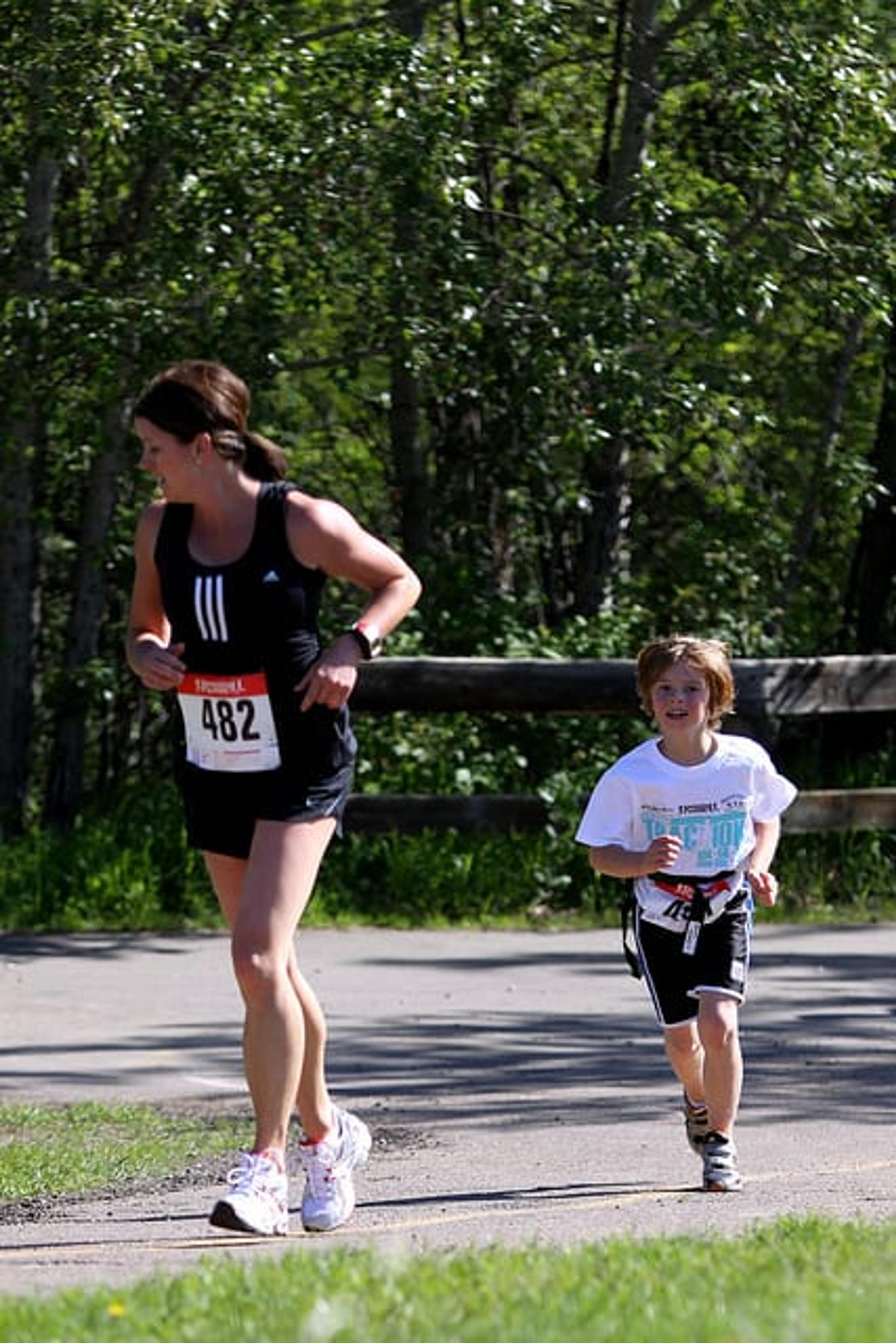Tips on how kids can get and stay healthy
Guest Blogger
| 5 min read

With their readiness for adventure and what sometimes seem like endless supplies of energy and curiosity, guiding kids into healthy eating habits and active lifestyles seems like it should be an easy task. As a mom myself, I know that it is not as easy as it seems.
As a dietician, I am greatly concerned with studies that show almost one in three children in Michigan is obese or overweight. Thirty years ago, most people led lives that kept them at a healthy weight. Kids walked to and from school every day, ran around at recess, participated in physical education class, and played outside for hours after school. Meals were prepared at home, always included a vegetable and had reasonable portion sizes. Eating at a restaurant or fast food establishment was rare and snacking between meals occurred much less frequently.
Children growing up today experience a different lifestyle. Car and bus rides have replaced the walks to and from school. After school time now often mean screen time with TV, video games, and the internet instead of playing outside. Physical education classes and after-school sports have been reduced. Families eat fewer home-cooked meals and eating out often means larger portion sizes. Now, snacking between meals is so frequent it can disrupt mealtime hunger. This changing environment has been a major driver behind the national childhood obesity epidemic. More and more school-aged kids are becoming overweight and obese, which can impact their physical health as well as their social and emotional health. Not only do overweight and obese children often suffer from poor self-esteem, bullying, anxiety and other behavior and learning problems, but they are also at greater risk for diabetes, high blood pressure, sleep apnea, asthma and other physical complications. If we don’t help our kids get healthier, we could be entering a time where children have a shorter lifespan than their parents.
Now that’s the bad news. The good news is that by making just a few lifestyle changes, we can help our children lead healthier lives:
- Set a good example: As children, there is a window of opportunity where habits are still malleable. Parents can be a role models for their children when it comes to healthy eating and physical activity. Despite the frantic morning routine we all go through, stress the importance of eating a nutritious breakfast either at home or at school and make sure you eat too. At dinner time, children will be more likely to fill their plates with fruits and vegetables if we are doing it, too.
- Talk it out: Talk to your kids about the importance of eating a well-balanced meal and focus on food that nourishes your body and helps it grow strong. Even if you’re on the go, stress the value of grabbing a delicious AND nutritious breakfast, snack or dinner.
- Be physically active together: Find activities that you and your children both enjoy and do them together. Let them know how great it feels to get active and be healthy. Physical activity helps control weight, builds lean muscle, promotes strong bones, muscle and joint development, and decreases the risk of obesity. Each day children need 60 minutes of play with activities that get them breathing hard and their blood pumping.
- Mix it up: Kids can get bored easily, so make sure to offer a variety of activities throughout the week. Mixing it up will hold interest. Start a stepping contest with a pedometer, create a scavenger hunt or treasure hunt around the house or enroll in a class at your local community center. Dance with your child to songs with a good beat. Promote healthy outdoor activities like tag, hide and seek, walking the dog, nature walks, ice skating or making snowmen. Try a new activity together! How about line dancing or doing a “fun walk/run” as a family? Or go to the library and check out a video on a new activity like yoga, kickboxing, or karate.
- Incentivize their progress: As a way of encouragement, you can offer non-food prizes for reached milestones in the class or at the end of a game. There’s also nothing wrong with a little healthy competition! This will challenge everyone in the family to give 110 percent. Just keep it positive and remember, having fun and staying active is the goal.
- Plan snack time: One in five school-age children has up to six snacks a day. While growing kids sometimes need to eat more often than adults, especially when activity levels are high, snacking should not be an all-day invitation to graze. Plan snack time and remember to keep portion sizes small and focus on fruits and vegetables. Snacks are just to boost energy and “hold you over” until the next meal.
Take advantage of ideas your kids may bring home from school. Thereare some great programs taking place in schools throughout Michigan, so if your child comes home and shares a great activity they did or a really delicious breakfast smoothie, don’t dismiss it! Suggest you make the smoothie at home or try the exercise at home together for some healthy family fun.
The most important part to keep in mind is to involve your child in their healthy transition. The more they can decide themselves, the more likely they will be to follow through with healthier practices. Let them be a part of a healthy lifestyle and it is one they can certainly carry through life!
By Shannon Carney Oleksyk, registered dietitian and healthy living advisor for social mission at Blue Cross Blue Shield of Michigan.
Photo credit: Sangudo





